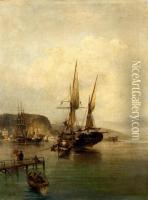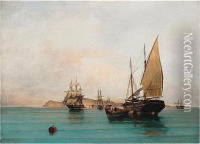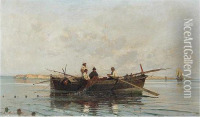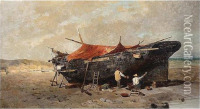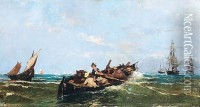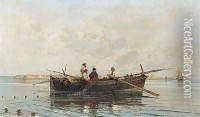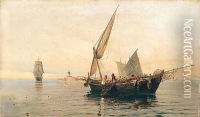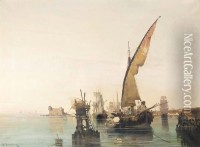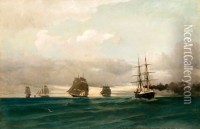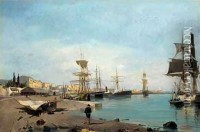Constantinos Volanakis Paintings
Constantinos Volanakis, born on the 4th of September 1837 in Heraklion on the island of Crete, was one of the most prominent Greek artists of the 19th century and is considered a master of seascape painting. His work captures the beauty and essence of the Greek seas and has become emblematic of the genre in Greek art.
Volanakis's early years were spent in Crete, but for his higher education, he moved to Trieste, Italy, where he engaged in commerce before deciding to pursue his passion for art. He studied painting in Munich at the Royal Academy of Fine Arts under the guidance of Karl von Piloty, a renowned German artist known for his mentorship of young painters.
During his studies, Volanakis was influenced by the Munich School, a group of Greek artists who were working in the city at the time. His style, however, remained distinctly personal and was characterized by his love for the Greek sea and shipping. Following his education, he spent some time traveling and studying in Europe, including a significant period in Italy.
In 1883, Volanakis returned to Greece and settled in the port city of Piraeus. His proximity to the sea allowed him to continue his explorations of maritime themes. Throughout his career, Volanakis was revered for his ability to depict the interaction of light with water, the movement of ships, and the daily life of sailors and fishermen. His seascapes are noted for their realism, attention to detail, and subtle use of color.
Volanakis's contributions to Greek art were recognized during his lifetime. He was appointed as a professor at the School of Fine Arts in Athens, where he taught for several years. His paintings were exhibited widely in Greece and abroad, earning him numerous awards and accolades.
The artist passed away on the 29th of July 1907 in Piraeus. Today, his works are held in many prestigious collections, including the National Gallery of Athens, and continue to be celebrated for their historical value and artistic mastery.

